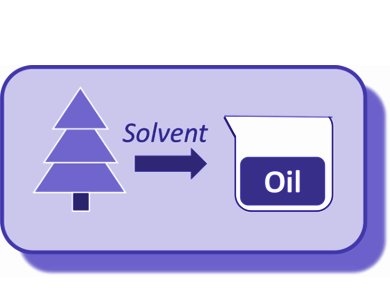After 40 years of research and development, biomass liquefaction is being applied on a 200–3,000 tons per year scale to produce biocrudes for use as heavy fuel or for upgrading to biofuels. Jean-Paul Lange, Shell Global Solutions International B.V., Amsterdam, The Netherlands, summarizes the various facets of the liquefaction process, from chemistry to product to technology.
Various biomass valorization approaches have been proposed, generally based on two main steps: depolymerization followed by deoxygenation. The depolymerization step proceeds through gasification, pyrolysis, hydrolysis, or hybrid forms of these. It may operate purely thermally or be assisted by chemical or biological catalysts. The deoxygenation generally proceeds through chemical catalysis or biotechnology. Liquefaction belongs to the depolymerization technologies. It partly cracks and deoxygenates lignocellulose to a biocrude that can subsequently be upgraded to biofuels by conventional oil refining processes. The liquefaction step is a hybrid between pyrolysis and hydrolysis.
Much understanding has been gained, for example, on the chemistry of the process, the chemical characteristics and properties of the biocrude, the impact of the solvent, and the role of optional catalysts on the process. Several process schemes have been proposed to maximize biocrude yields and to minimize solvent and manufacturing costs. Research has also looked at using the biocrude as boiler fuel or heavy-duty fuel and at upgrading it to light transportation fuels by Fluid Catalytic Cracking (FCC) or hydrocracking/ hydrodeoxygenation. Several concepts have been pushed to demonstration scale.
However, many challenges remain to increase the chances of commercialization. The most important one is the proper valorization of the biocrude product. The upgrading to light biofuels still suffers from modest yields and significant cost. Valorization as material might offer better promises. Another important challenge is low-cost feeding of the biomass to a liquefaction reactor, particularly when carried out at a large scale. The combination of high temperature, significant pressure, change from “dry” to “wet” environment, and characteristics of the biomass (e.g., low density) are significant engineering challenges. Various concepts have been put forward to separate the biocrude from the solvent. Demonstration at scale is still needed.
The field of liquefaction still offers many scientific challenges. These vary from a detailed understanding of the depolymerization chemistry to the effect of solvent and catalysts and in-depth characterization of the biocrude through hybrid spectroscopic methods.
- Lignocellulose Liquefaction to Biocrude: A Tutorial Review,
Jean-Paul Lange,
ChemSusChem 2018.
https://doi.org/10.1002/cssc.201702362
Also of Interest
- Diesel From the Forest,
Vera Koester,
ChemViews Mag. 2017.
https://doi.org/10.1002/chemv.201700008




